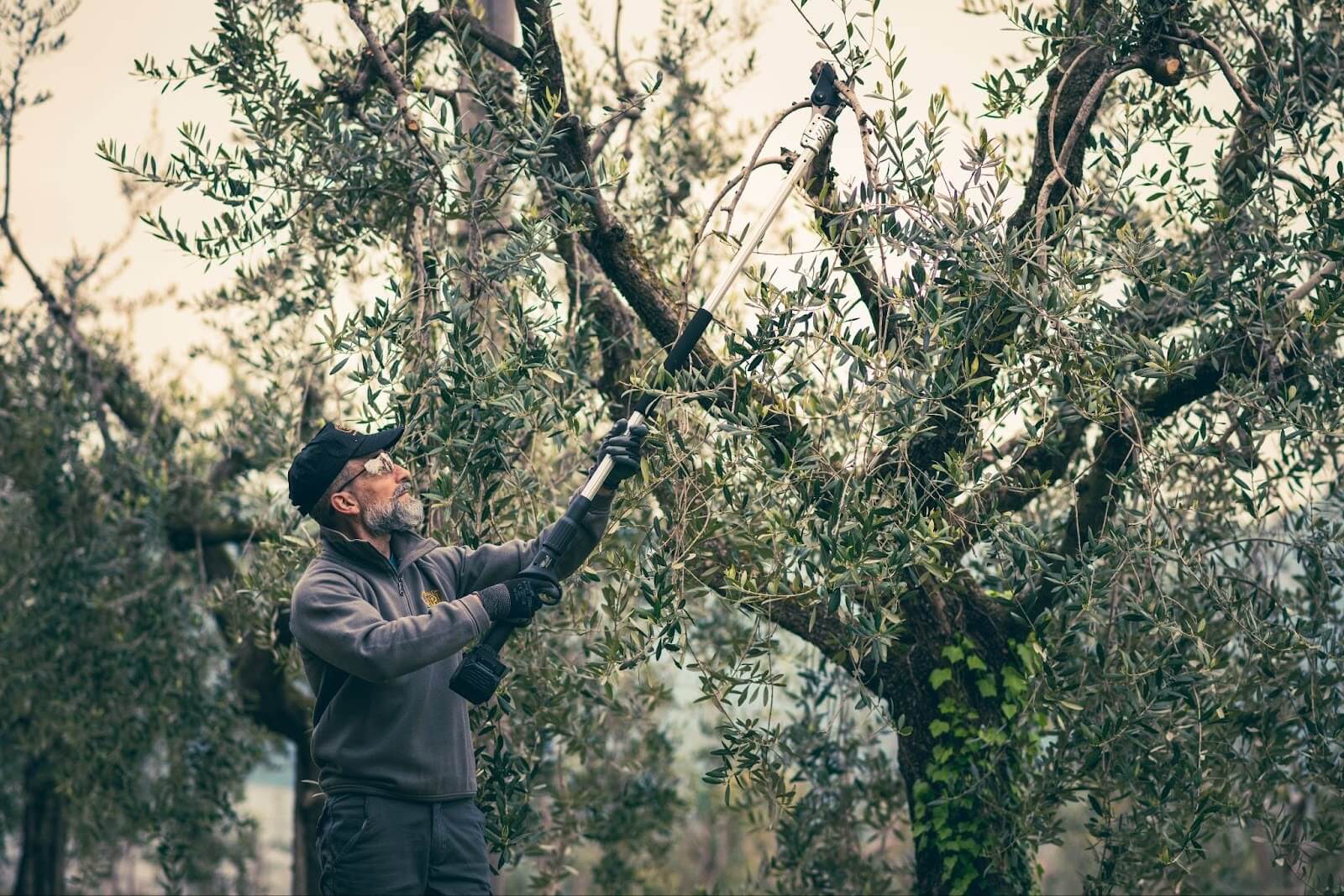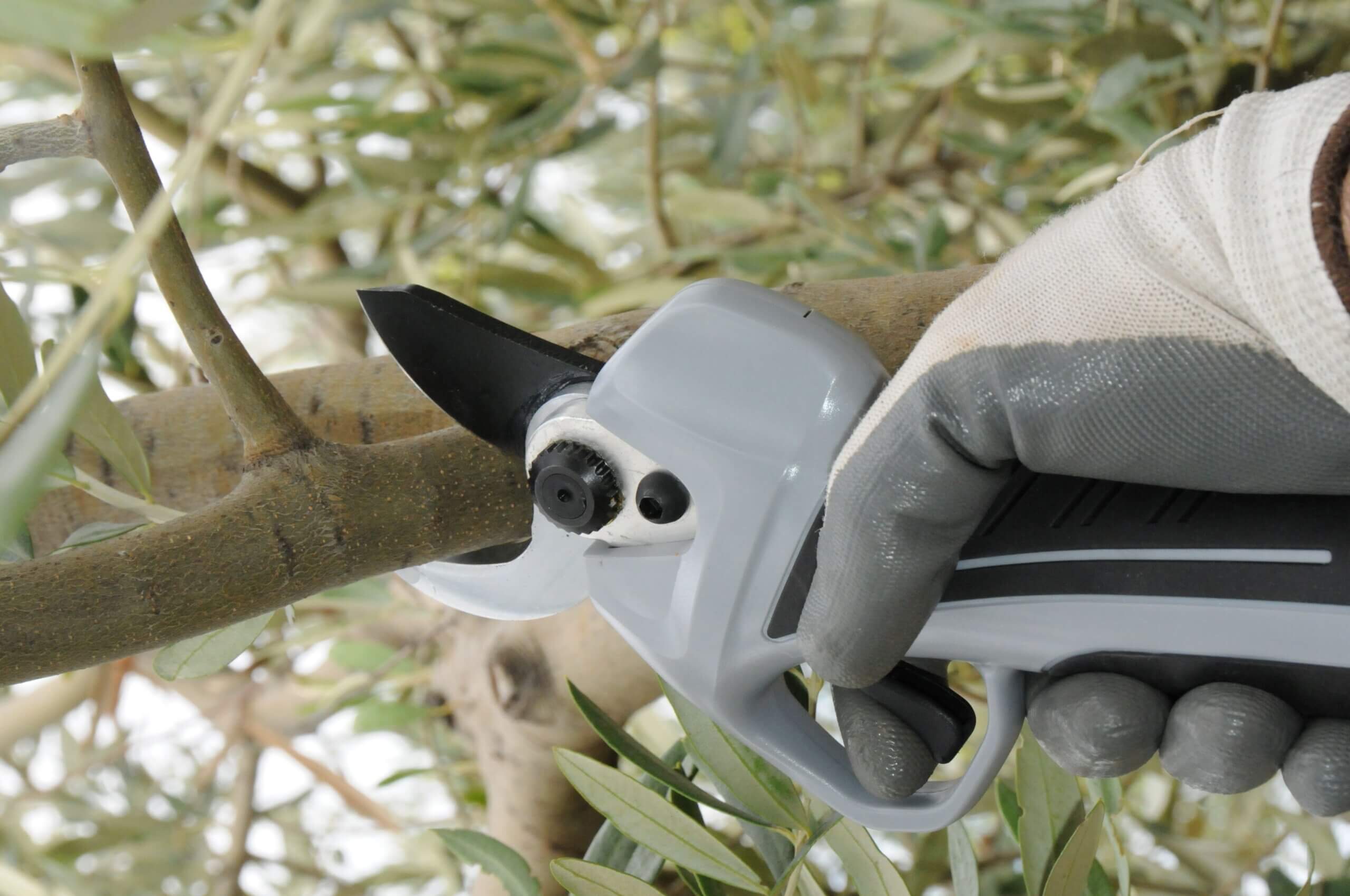Winter pruning of olive trees is a crucial operation to ensure the health, productivity, and longevity of this typical Mediterranean crop. By working during the vegetative dormancy period, it is possible to precisely shape the structure of the olive tree, improving both light penetration and air circulation within the canopy. This promotes an optimal balance between vegetative growth and fruit production, resulting in consistent harvests and higher-quality extra virgin olive oil.
In this guide, based on authoritative sources and specialized training courses, we will explore the best timing, the most effective techniques, and the recommended tools for professional pruning. We will also examine the most common mistakes to avoid and the influence of climatic conditions—particularly late frosts—to ensure safe and effective operations. Maintaining the right balance between vegetation and the natural growth cycle is essential to prevent stress and damage to the plant.

Why Prune Olive Trees in Winter: Benefits and Goals
Pruning during the cold season is essential to maintain a well-lit and airy canopy, conditions crucial for optimizing photosynthesis and preventing fungal and bacterial diseases. In this phase, suckers and water sprouts are removed—vigorous, fruitless shoots that consume the tree’s energy without contributing to production.
Removing these shoots preserves a stable balance between vegetative growth and fruit production, allowing the renewal of fruit-bearing branches and ensuring continuity in yields. This practice improves both the quantity and quality of olives, positively affecting extra virgin olive oil.
According to the Minoprio Foundation and other institutions such as Arca Olearia, well-executed pruning represents an agronomic investment that delivers tangible benefits for the olive grower. A balanced canopy facilitates light penetration and aeration, key elements for optimal olive ripening and reduced risk of diseases, ensuring a high-quality final product with excellent nutritional value.
When to Prune Olive Trees: Optimal Timing and Climatic Factors
The ideal period for pruning coincides with the olive tree’s vegetative dormancy, which extends from late autumn to the end of winter, when the tree pauses its vegetative activity. Intervening during this period avoids disrupting bud development and ensures the tree’s health is preserved.
Generally, the best time is between late winter and early spring, just before the resumption of vegetative growth, to minimize damage caused by overly early pruning. It is important to consider the risk of late frosts, which can damage freshly pruned branches and awakening buds, compromising flowering and future production.
Climatic conditions vary significantly depending on the geographic area: pruning schedules must be adapted to local specifics. Additionally, climate change is reducing the safe window for intervention, making constant monitoring of weather conditions necessary.
In areas with low frost risk, pruning can sometimes be done alongside harvest, optimizing time and resources. Careful planning based on climate and geography is essential to preserve the olive tree’s vitality and productivity.
Check the olive harvest calendar in Italy for more details
Winter Pruning Techniques: Effective Methods and Tools
The most common and recommended technique for adult olive trees is the multi-conical vase pruning, which produces a balanced and productive structure. This form involves the creation of 3–5 main branches angled upwards, forming a robust and well-distributed framework.
This configuration improves aeration and optimizes light penetration within the canopy, essential for fruit and oil quality. Cuts should be made correctly, just above an outward-facing bud, to avoid long stubs that could facilitate pathogen entry.
Dry pruning involves the targeted removal of suckers, water sprouts, and damaged or dead branches, essential to maintain vegetative-fruit balance and reduce competition among branches. It is also important to promote the growth of weak suckers, which will become future productive branches and help renew fruit-bearing shoots.
For these tasks, it is recommended to use pruning shears for thin branches, manual saws for thicker branches, and pole pruners to reach higher parts without damaging the tree. Regular maintenance and disinfection of tools, as emphasized by the Minoprio Foundation and Arca Olearia, are essential to ensure clean cuts, prevent the spread of diseases, and minimize the risk of mechanical stress and breakage.

Common Mistakes to Avoid During Winter Pruning
One of the most common mistakes is excessive pruning, which stimulates overly vigorous vegetative growth that consumes too much energy, reducing olive production. Conversely, pruning that is too light may not promote adequate renewal or sufficient canopy aeration.
Another frequent error concerns the quality of cuts: stubs that are too long or cuts made too close to the branch base increase the risk of infections and may cause breakage. Failing to disinfect tools between cuts poses a serious risk for spreading fungal or bacterial diseases, compromising the health of the entire olive grove.
Disregarding the natural shape and skeletal structure of the olive tree leads to deformations that limit productivity and make future pruning more difficult. Finally, pruning too early or during late frosts interrupts the tree’s natural dormancy cycle, damaging vegetative tissues and reducing production. It is therefore essential to avoid pruning at inappropriate times to protect the tree from stress and harm.
How to Prepare Olive Trees Before Pruning: Practical Tips
Before starting winter pruning, it is essential to perform a thorough assessment of the tree’s structure and health. Identify and remove dead, diseased, or damaged branches to prevent the spread of disease and facilitate the pruning process.
Cleaning and disinfecting pruning tools are crucial steps to ensure precise and safe cuts, promote rapid healing, and reduce the risk of post-pruning infections. Pruning plans should consider climatic conditions and the risk of frost, avoiding work during periods of extreme cold.
Preparing adequate tools in advance, such as shears, saws, and pole pruners, and checking their efficiency is essential to work safely and accurately. Proper preparation helps reduce stress on olive trees and preserves their vitality for the next season.
Impact of Climate and Frost on Winter Pruning
Late frosts pose a significant threat to winter pruning of olive trees, as freshly pruned branches and awakening buds are particularly vulnerable to severe cold. Frost can compromise the entire phenological cycle, slowing or preventing flowering and reducing yields.
The gene FLOWERING LOCUS T (FT) regulates the transition from vegetative to reproductive phases: climatic damage can alter its expression, causing delays or reductions in flowering. For this reason, it is essential to avoid pruning too early or under frost-risk conditions, respecting the vegetative dormancy and preventing mechanical damage.
Management strategies must be adapted to local geography and frost risk, taking into account the effects of climate change, which are shortening the safe pruning window. Continuous monitoring of weather conditions and careful planning of interventions are essential to safeguard the health and productivity of olive trees over time.

Recommended Tools for Effective and Safe Pruning
To perform winter pruning effectively and safely, it is essential to select the most suitable tools and keep them in excellent condition.
Pruning shears are ideal for cutting branches precisely, while manual saws or chainsaws allow work on larger-diameter branches without damaging the tree.
Battery-powered pruners are indispensable for reaching the higher parts of olive trees without climbing, reducing the risk of accidents and making the work easier. It is essential to keep all tools sharp and disinfected to prevent irregular cuts that could encourage infections or slow healing.
Regular disinfection of tools, as recommended by specialized institutions such as the Minoprio Foundation, is crucial to avoid the transmission of diseases between different plants. Additionally, all personal safety precautions should be observed, including wearing protective gloves, goggles, and appropriate clothing, to minimize the risk of injury during pruning operations.
Conclusion
Winter pruning of olive trees is an essential agronomic practice to maintain an optimal balance between vegetative growth and fruit production, improve the quality and quantity of olives and oil, and preserve the long-term health of the tree. Acting during the correct period, respecting vegetative dormancy and climatic conditions, using appropriate techniques such as multi-conical vase pruning, and employing the right tools are fundamental steps for achieving successful results.
It is important to avoid forcing the process or pruning at inappropriate times to protect olive trees from frost damage or vegetative stress. By carefully preparing the trees and following best practices, we can ensure consistent harvests and support the valorization of local olive oil production, safeguarding the tradition and quality of extra virgin olive oil over time.